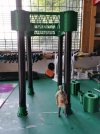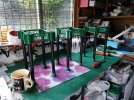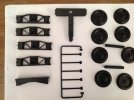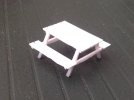Rhinochugger
Retired Oik
I suppose another option, but would require a bit more work, would be one of those Tamiya model gearboxes - the one I bought came with four optional ratios, and you get a steel axle which would work the same way as driving off the motor shaft. It would take a bit of work, thoughYup! The easiest option as he also included a rig to hold the motor, battery and switch in the right position.
I'm just working on a Plan B - if that doesn't do the job then I might take you up on the offer...
Rik




